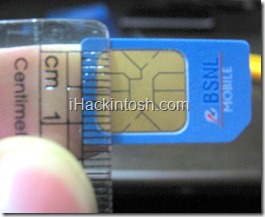 Recently you may have just purchased one of Apple’s latest gadgets, the iPad WiFi+3G, from the 9 countries officially selling them, or plans to get one of the iPhone 4 from either Canada, France and UK. This is because all iPad WiFi+3G (except the ones sold in Japan) and iPhone 4 sold in Canada, France, UK and Hong Kong are SIM-unlocked. Meaning they will not be locked to a particular GSM carrier, therefore users can choose to put GSM SIM cards from any carriers into these devices and they will work.
Recently you may have just purchased one of Apple’s latest gadgets, the iPad WiFi+3G, from the 9 countries officially selling them, or plans to get one of the iPhone 4 from either Canada, France and UK. This is because all iPad WiFi+3G (except the ones sold in Japan) and iPhone 4 sold in Canada, France, UK and Hong Kong are SIM-unlocked. Meaning they will not be locked to a particular GSM carrier, therefore users can choose to put GSM SIM cards from any carriers into these devices and they will work.
That’s true with a small exception, these GSM SIM must be the micro-SIM format rather than the more commonly used “mini-SIM” among GSM carriers around the world.
At the moment micro-SIM cards are only available from 3 HK, but these cards are for data access only and does not include voice capabilities. For Smartone-Vodafone (SMV) and PCCW they both offer micro-SIM cards but only for customers who have subscribed to their data tariff plans and without voice capabilities.
So if you’re looking for a micro-SIM to put inside your iPhone 4 from one of the Hong Kong carriers, you will have to wait until the official launch of the iPhone 4 in Hong Kong. Fortunately Hong Kong is one of the 9 countries in the second phrase iPhone launch initially planned for July 2010, but recent sales and high demands in the 4 initial launch countries may cause the second phrase to be delayed.
I had contacted SMV and PCCW and they both tells me that they have no availability date for micro-SIM card, only that both will have micro-SIM cards when the iPhone 4 is officially available for sale in Hong Kong.
If you cannot wait, the alternative is to convert your existing mini-SIM to a micro-SIM card. It turns out the contacts for these two types of SIM are the same. The only different being the dimensions of these cards 15mm x 25mm (mini-SIM) compared to 12mm x 15mm (micro-SIM).
The following step by step instructions are from iHackintosh.com and they are provided here for your convenient. There are no guarantee by iHackintosh.com or myself (Vinko.Com). Also note that most carriers charges a fee for replacement SIM cards.
What you you will need are: mini-SIM, marker pen, ruler, sharp cutter and filing tool (Nail File).

- Get a GSM mini-SIM card. Your existing GSM SIM card will do.
- Mark the mini-SIM with the dimensions of the micro-SIM card (12mm x 15mm).



- Make initial cuts along marked lines with a cuter, bend along the cuts and then finish with a scissors.
- Use the file to file down the conners and edges.
If you ever want to use this newly created micro-SIM card in a device that only accept mini-SIM cards like the original iPhone, iPhone 3G or iPhone 3GS. You can purchase a micro-SIM Adapter from Vinko’s Treasures for USD5.15 including worldwide shipping.


A pity that HK does not offer 2 SIMs for 1 number. This is common in Israel (at least), allowing users to keep one phone installed in their car and one hand-held, both using same subscription plan. In such case we would keep one microSIM (iPad) and one common SIM (most mobile phones)